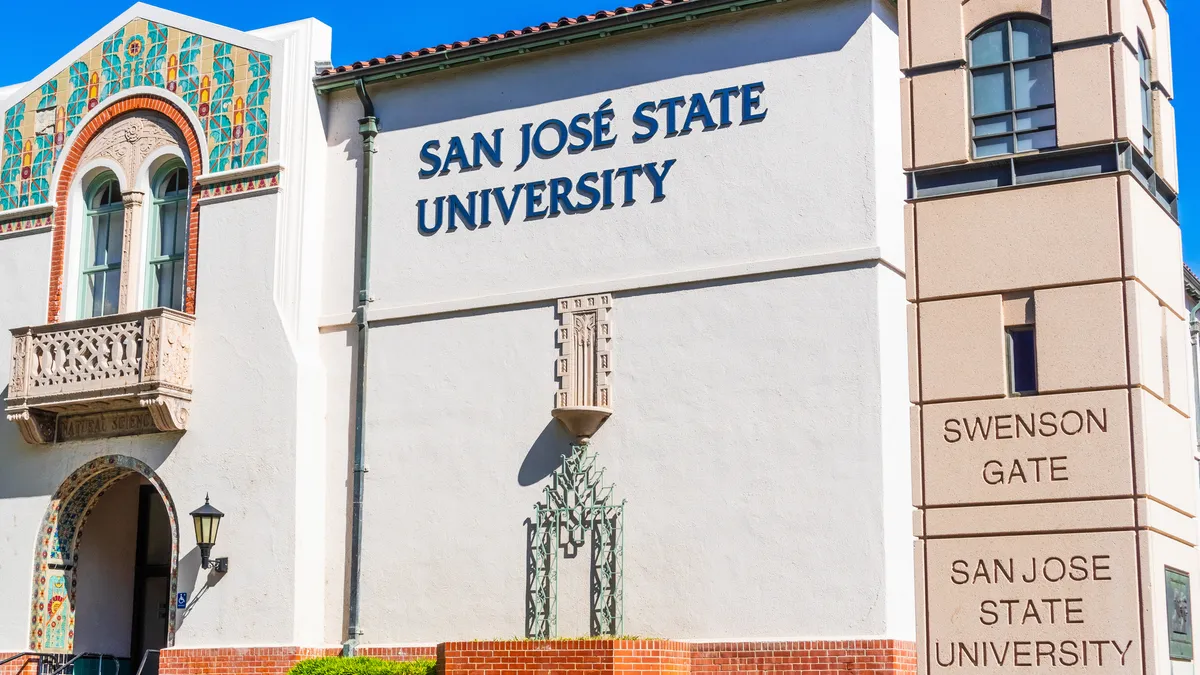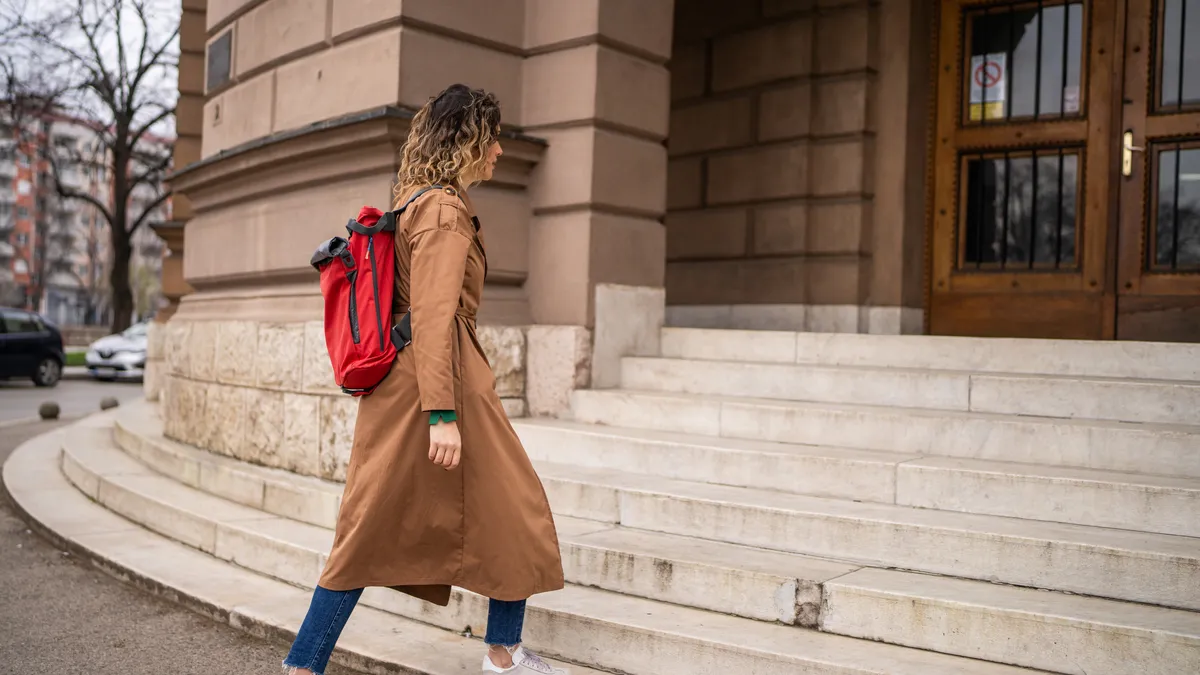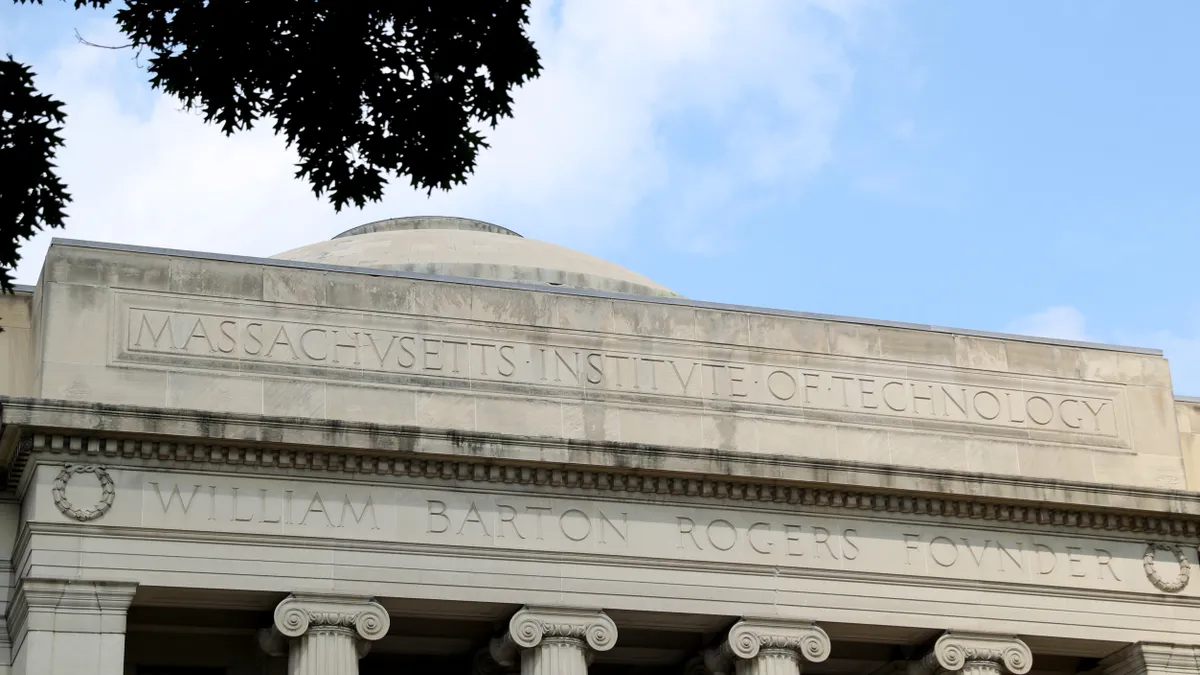When the U.S. Supreme Court ruled against race-conscious admissions last year, experts predicted diversity at some institutions would take a hit. Now, data from several selective institutions is showing just that.
That includes the Massachusetts Institute of Technology, which reported smaller shares of underrepresented students in its incoming class. Just 5% of MIT’s incoming first-year students were Black or African American, down from an average of 13% over the past four years. Amherst College, in Massachusetts, also reported steep declines in racial diversity among its incoming students.
The ruling only directly affects a small band of selective colleges, as most institutions accept the majority of their students. Still, experts have expressed concerns that the decision will dissuade underrepresented students from higher education.
As the effects of the Supreme Court's ruling become clearer, here is what experts told Higher Ed Dive that colleges can do to foster diverse student bodies.
Remain calm
Though some institutions have posted alarming numbers, the result is a mixed bag overall. Some selective institutions — including Duke University, in North Carolina — have maintained or even increased their shares of incoming Black and Hispanic students.
One year of data may not provide enough data to draw conclusions, experts said. Colleges may only fully understand the Supreme Court decision’s effect on their student bodies once they have more enrollment data.
“It’s really going to take a couple of years to get a sense of the true impact of both the ruling as well as new strategies that schools have implemented to try to maintain a diverse class of students,” said Bryan Cook, director of higher education policy at the Urban Institute, a left-leaning think tank.
Other factors likely affected enrollment this year. The bumpy rollout of the new Free Application for Federal Student Aid may have discouraged some students from applying to college. The share of high school seniors completing the form dropped by nearly 9% this year, according to data from the National College Attainment Network.
State policies restricting diversity, equity and inclusion efforts at colleges may also have deterred would-be applicants, Cook said.
However, data from states that banned race-conscious admissions policies years ago paints an alarming picture of what may lie ahead.
In California, research has shown that the end of race conscious admissions in 1998 deterred students from racial minority groups from applying to institutions in the University of California system. The percentage of students from those groups at the system’s selective Los Angeles and Berkeley campuses were immediately cut in half.
Expand the applicant pool
The Supreme Court decision may have had a chilling effect on student applications by making some students feel unwelcome in higher ed, said Madeleine Rhyneer, vice president of consulting services and dean of enrollment management at education consultancy EAB.
But selective colleges can still focus on increasing diversity in two areas: encouraging students to apply and getting them to enroll once accepted.
“You can’t use race when you’re deciding who to admit,” she said. “But you can absolutely be totally race-aware as you’re building your funnel of prospects and qualified inquiries.”
College officials can adopt several strategies to welcome students from underrepresented groups.
When they visit high schools, they can prioritize those with larger shares of Black and Hispanic students, Rhyneer said. When buying student data from organizations like the College Board, admissions officials can be thoughtful about where they are focusing.
College officials can also remove barriers in the application process, said Wil Del Pilar, senior vice president at EdTrust, a nonprofit organization focused on equity in education. Multistep applications, fees and standardized testing requirements can all discourage low-income students and students of color from applying, he said.
“If you don’t have diversity in your pool, you’re not going to have diversity in your class,” Del Pilar said.
Explore financial aid programs
Tuition or financial aid initiatives can encourage applications, but they may not work for every institution, experts said. A few universities that have largely maintained the diversity of their incoming classes recently started ambitious financial aid programs, although it’s difficult to attribute that success to any one factor.
Duke announced last summer that it would offer free tuition for students from the Carolinas whose family incomes were $150,000 or less. The share of the incoming first-year class identifying as Hispanic or Black increased by one percentage point for each group, to 14% and 13%, respectively, per Axios.
The selective University of Virginia expanded a similar program late last year, covering tuition for Virginia families who earn less than $100,000. The share of Black students in the incoming first-year class decreased by about one percentage point, to 7.2%, but the share of Hispanic students increased by a little under 2 percentage points, to 9%.
Bentley University, a private Massachusetts institution that accepts a little under half of its applicants, has focused its financial aid initiatives on first-generation students. The university will provide an award to match tuition at the University of Massachusetts Amherst for first-generation students from the state whose families earn under $135,000.
Carolina Figueroa, Bentley’s vice president for enrollment management, credits the effort with helping increase the university’s share of Black and Hispanic students.
The percentage of the incoming first-year class identifying as Black increased two percentage points from 2021 to 2024, now standing just under 6%. The share of the class identifying as Hispanic increased 8 percentage points in that same time, now standing at almost 19.
In addition to the tuition initiative, Bentley has also partnered with community-based organizations that serve students from backgrounds underrepresented in higher ed. After identifying students who meet the university’s academic qualifications, Bentley will fly them out with chaperones to see the campus. The college has also added a new assistant provost position to focus on academic advising and student success.
“There’s no use to us in bringing a student in if they can’t be successful,” Figueroa said.
Increase yield rates
In addition to increasing applications, institutions can work to encourage students from underrepresented backgrounds to enroll once admitted.
Many institutions already have admitted students’ weekends. Similar events specifically for students from different backgrounds can help them and their families feel welcome at an institution. Colleges can also run events in different languages for families who aren’t fluent in English, Rhyneer said.
“This is another kind of signaling, that we care about you, we care about who you are and your background,” she said.
Ultimately, institutions will need to continue trying new things to see what works for them and their students, experts said.
“What a lot of schools are going to have to do over the next couple of years is experiment and try different approaches,” said Cook. “There’s no silver bullet.”





















